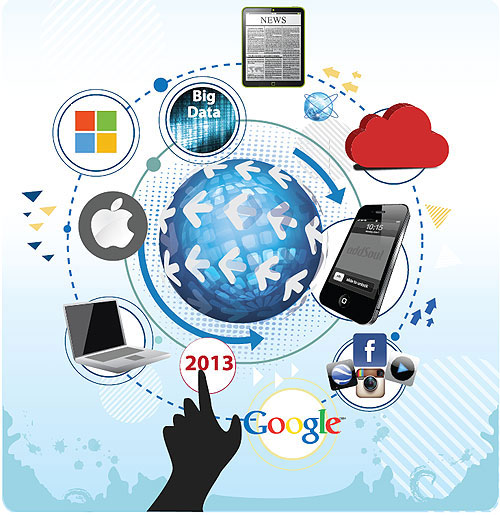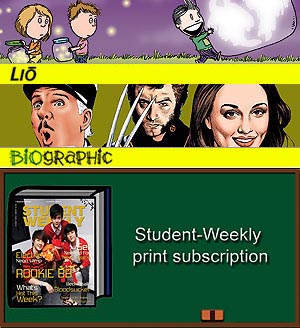
2013 trends as predicted by leading Thai IT experts
The next big tech things in 2013 are all about mobile device battles, mobile apps, the personal Cloud and "the Internet of Things" as well as hybrid IT and Cloud computing.
Software Park director Thanachart Numnonda and committee member of the Thailand Information Security Association Prinya Hom-anek recently shared Gartner Inc's prediction of the Top 10 technology trends of 2013. Heading the list is the prediction that mobile phones will surpass PCs as the most common web-access devices, booting PCs from the top spot.
More than 80% of handsets sold in mature markets will be smartphones in 2015, but only 20% will be Windows phones. Media tablet shipments will be about half that of laptop shipments, and Windows 8 will likely be in third place, behind Google's Android and Apple's iOS operating systems. Thanachart added that the era of PC dominance with Windows as the single platform will be replaced by a post-PC era where Windows is one of a variety of environments.
For the next few years, no single tool will be optional for mobile applications, so expect to employ several of them at once. Prinya pointed out the six mobile architectures that will remain popular are native apps, special, hybrid, HTML5, message (the fifth revision of the HTML standard), and no client. As HTML5 becomes more capable, there will be a long-term shift from native apps to web apps. Native apps won't disappear and will always offer the best user-experience and most sophisticated features.
Personal Cloud will gradually replace personal computers as the centre of web users' digital dependence. Users will see the personal Cloud as a portable data centre where they can go for all their digital needs. Focus will shift from the client device to Cloud-based services delivered on access devices.
The internet will expand as physical items like consumer devices and physical assets are connected to the net. Key elements of mobile devices are embedded sensors, image-recognition technologies and near field communication (NFC) payments. Smartphones and intelligent devices will no longer just use the cellular network _ they will communicate via NFC, Bluetooth, LTE (or 4G), and Wi-Fi to a wide range of devices and peripherals such as wristwatch displays, healthcare sensors, smart posters and home-entertainment systems. "All of these are called 'the Internet of Things'," said Thanachart.
Companies must deal with multiple stores, payment processes and sets of licensing terms as some vendors limit their stores to specific devices and types of apps. Many organisations will provide mobile apps to workers through private app stores by 2014. The role of IT will shift from centralised planner to market manager, providing governance and brokerage-services to users _ potentially even as an ecosystem to support "apptrepreneurs".
The internal Coud Services Brokerage (CSB) role is emerging as IT organisations realise the responsibility of improving Cloud services. This CSB role represents a means for IT organisations to retain and build influence in the organisations and become value centres while facing challenges related to an increased adoption of the Cloud.
Big data, meanwhile, is shifting the focus from individual projects to an influence on enterprises' strategic information architecture. Organisations will abandon the concept of a single enterprise data warehouse containing all information needed for decisions. Movement toward multiple systems, including content management, data warehouses, data marts and specialised file systems is tied in with data services and metadata.
In-memory computing (IMC) can squeeze batch processes normally lasting hours into minutes or seconds. These processes are provided in the form of real-time or near real-time services and delivered to users in the form of Cloud services. Numerous vendors will deliver in-memory solutions over the next two years, driving this approach into mainstream use.
Thanachart pointed out that the market is undergoing a shift to more integrated systems and ecosystems and away from loosely coupled heterogeneous approaches. Cloud-based marketplaces and brokerages such as Salesforce's AppExchange and Microsoft's marketplace will facilitate purchases.
Prinya believes that what's driving the trend for integrated ecosystems is users' desire for low cost, simplicity and assured security, and the vendors' ability to control solution stacks and obtain greater sales margins.
"In the mobile world, vendors like Apple, Google and Microsoft drive control across the end-to-end ecosystem, extending clients through apps," said Prinya.



